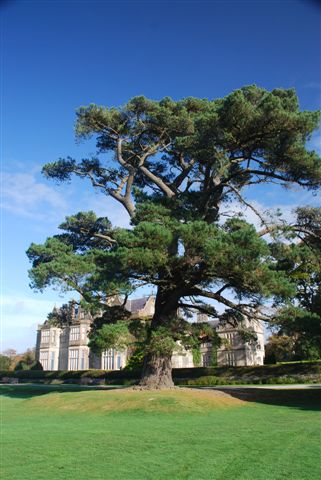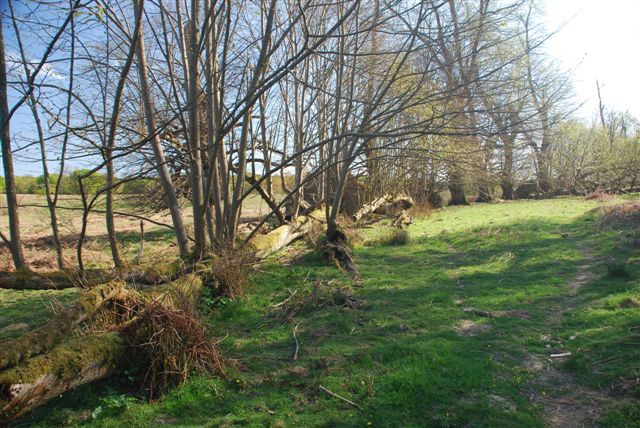Trees in Our World
29/09/2014

Chestnut in Leicester University Botanic Gardens
Almost every day, I have something to do with trees, which is a great joy. Many of my clients are arboricultural consultants or landscape architects with a tree specialism. They need graphics, photographs or research into the trees in the landscape, particularly if they are too pressed for time to do it themselves or not confident. Regularly this shows how these magnificent plants are viewed or treated by their owners/managers, the public or other consultants who could possibly have done things differently.

Beech on the south shore of Loch Ness
A tree is a living organism that requires food, water and light to grow. If the food is sparse or toxic, then the growth will become stunted. If there is too much or too little water, then the tree will grow under stress and take steps to compensate or adapt if it can. If the light levels are low or patchy, then the form of growth the tree takes will be very different to that of an open location. This is all very simple and very obvious, but there are other things that can happen where the living organism angle becomes over-looked. The object, large and looming becomes taken for granted.

Cedar, Muckross Park, Killarney, Ireland
Local to us is a patch of grass that is large and a landscape gardening company has a contract to mow and strim it. This contract is fulfilled by young men who are presumably not highly paid, since their attention to detail is not impressive. In the open grassland are some small ornamental trees that have been planted for various commemorations. It is difficult to mow right up to the trunk (it appears) so they use a large strimmer. The lads appear to enjoy the strimming and often give the poor grass a haircut like a fashionable tatooist. Blatantly the idea of these trees as anything more complex than fence-posts has completely escaped them. In fact their strimmer is pretty lethal to fenceposts as well, but one tree in particular has been completely ring-barked by the close attentions of the whipping string. It is as if the toenails had been cut down to the bone. This is shocking when an inexperienced gardener does it to their own tree, but in my view beyond appalling in a contract gardener.
On a similar theme, in our modern world of ostentatious over-use of nitrogen fertiliser and the use of catalytic convertors, climbing ivy is a frequent choker of trees (see Ivy - Helix in more than name). The jury is out over how doomed a tree is if it has ivy growth, many survive very well and the autumn flowers are crucial sources of pollen for bees and wasps at the end of the season. There can be definite instances of ivy doing so well that the immune system of the tree buckles under the stress and then it can start to fail. In these circumstances action does need to be taken and the most frequent is 'careful' cutting of the basal stems of the ivy, ultimately killing it and making it easier to remove or more likely to disintegrate and remove itself. Again, not all chainsaw operators view trees as living, growing organisms and again this practice can end up by cutting through the bark of the tree, ring-barking it and killing it.
Tree as sheltering friend, Sussex
Traditionally, trees have been wonderful climbing frames for children to climb and tree-houses are very popular, made from all manner of objects. Some are sophisticated (and heavy) some are simple and kinder to the tree. Ropes to swing on can be found on almost all public footpaths running through woodland near to residential areas. These are usually hung from the accessible branches and again, the idea of this static immoveable, timeless object belies the fact that it is alive and vulnerable. Oak trees in particular are seen as sturdy and solid, in spite of the growing problem that acute oak decline and other diseases can present, including unforeseen dropping of limbs. It is a simple engineering fact that the further away a weight is added to a branch from the trunk, the greater the strength required in that branch to cope with it. Strength is not just girth, broader branches can shatter, while narrow branches can be more supple. The key is not to look at the tree as a mug stand, but as it is, alive and ever-changing. A beautiful friend not to be taken for granted.

Phoenix lime trees in Buxted Park, Sussex
Should a tree fall, again things can be contrary to expectations and a rapid tidy up is not necessarily the only option. If the genetics of the tree make it of special character, this is very much the case. Lime trees are useful at re-inventing themselves after windfall to form phoenix trees and this can be a useful way of sourcing replacement trees for avenues or in parkland areas.
________________________________________
Thank you .....
 Blog
Blog Writing
Writing